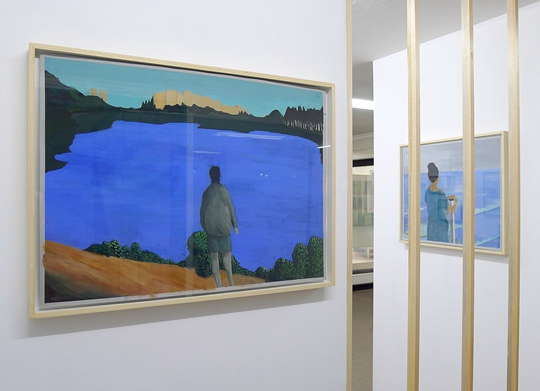You won’t be young forever
| 2017年02月04日 | 发表于 LEAP 42

“You Won’t Be Young Forever” serves as a distinct example of how to work collaboratively with youth. A small office building set to be demolished needs no renovations or any visual disguises, it simply provides a venue for an exhibition. The curator and artists acquaint themselves with this place for the first time; therefore, rather than another routine exhibition, this is more of a project initiated by the curator alongside artists–a collaborative, transformative work on space. Beyond its appearance, the transformation occurs in its spatial function (from a withering office space to a vi-gorous art venue) and spatial arrangement (from a hierarchical administrative space to an impartial inter-linked exhibition venue)–A perfectly new sense of site and iconography are presented, thoughthe language of architecture remains.

2015
From the ways that modern information is produced and disseminated, we could certainly expect to see promotional materials on the display racks by the entrance, but instead, sitting there are the artist books which the curator had invited each artists to create for theexhibition. Likewise, we mightexpect a lobby or a reception area for office work, but the assumption is dismantled by the exhibition title graffitied in powdered milk as well as the lined-up sculptural, installation and video work by Lin Aojie and Yunyu Shih; we might expect an obscure meeting behind closed doors, but-this is replaced by public talks and debates;we mightfurther expect a plain advertisement by the bathroom sink, but what greets us instead is Zhong Jialing’s painting, rich in textures, depicting figures in various postures. Even within a confined and cramped pantry room one will discover Feng Fo Monthly publications and works. Walls that were perhaps once covered in consumerist decorations are now the perfect backdrop to accentuate Zhang Wei and Gao Yuan’s paintings. The modern office area that was once sectioned into various departments is now bonded togetherby Zhu Jianlin and Ann Jing’s works sourced out of objects, stories, and images from elsewhere. Mending remaining divisions are the sounds that pierce through walls in Shen Xin’s video works, along with, suspended in the hallways, Li Shuang’s fragmented texts born in the age of the Internet.

Indeed, while we see multiple works in an office space, more of what springs before us is a workplace where space is altered through exhibition, where a total entity is born out of collabora-tions and where peculiar iconography mutates out of existing architectural symbols. Nothing is uni-fied, but rather there is a hybrid of incongruity in every corner: there is a hybrid of individuals, a hy-bridity of exhibition, of the work, of typically modern architectural space with contemporary art. We may interpret this exhibition as a modelfor a small artists’ gathering–people work in neighboring studios while collectively forging a venue for art to take place. Despite needing to exhibit in a rela-tively confined space, in no way does it impede the momentum of their work as they weave through one another. Here, they negotiate spatial allotment, discuss exhibition ideas and explore possibilities of transforming the space–in place of an exhibition routinely connected through narra-tives and work, this is based on consensus in progress on-site.
From certain perspectives, the curator has become an unnamed artist in this exhibition. After step-ping inside the exhibition hall, after their involvement in transforming space and assembling the exhibition, work officially begins for the curator and artists. Participants are asked to reflect upon themselves as they step inside the venue. For the curator, it means abandoning all existing under-standings of the artists’ works and expectations of the ultimate outcome; for artist, it means aban-doning the completeness and materiality of works; for the audience, it means abandoning the need to look for signs. Everyone begins from the very start here in this room. The irrepressible force of time is a reminder of the space nearing its doom; as this inescapable fact looms over us, starting work in the space seems to be the only resolution.

A metaphor of the state of youth can be proposed: imminent and unsettling, dreadful yet thrilling. The exhibition’s final display, at the same time, becomes a symbol of the reality of youthful work– always prepared to initiate dialogue with an unfamiliar environment and respond with fast and effi-cient work. Therefore, on the level of exhibition working methods, “You Won’t Be Young Forever” proves to be a unique example. Objectively and subjectively comparing concrete-built space and fleeting youth in its ways of seeing and definition reveal to us that if even the former cannot promise longevity, then surely one can adapt to work with and alongside youth. Through the exchange of knowledge, techniques and realizing consensuses, dissident opinions can bewithheld to ensure a long continuance of artwork and not one subject.
Text by Luan Zhichao
Translated by Sabrina Hsu
YOU WON’T BE YOUNG FOREVER
2016.11.11-12.20
No. 235, Guangfu Road, Shanghai

